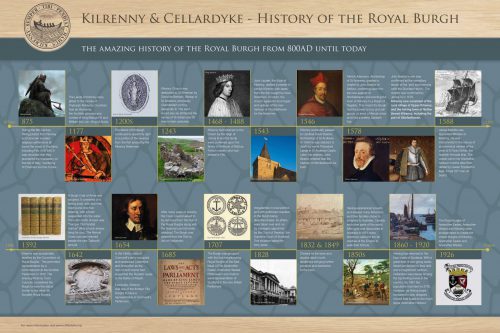KILRENNY & CELLARDYKE - HISTORY OF THE ROYAL BURGH
Scroll left and right below to travel the historical timeline
- 875 AD
- 1177 AD
- 1200s AD
- 1243 AD
- 1468 – 1488 AD
- 1543 AD
- 1546 AD
- 1578 AD
- 1578 AD
- 1588 AD
- 1592 AD
- 1654 AD
- 1685 AD
- 1707 AD
- 1828 AD
- 1832 & 1849 AD
- 1850s AD
- 1860 – 1920 AD
- 1926 AD
Viking Invasion
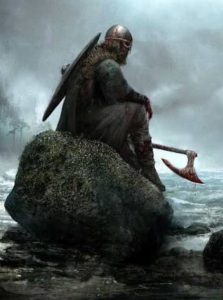
During the 9th Century Viking pirates from Norway and Denmark invaded religious settlements all round the coast of Scotland, including Fife. In 875AD it was recorded that they plundered the monastery on the Isle of May, murdering St Ethernan and his monks.
Countess Ada de Warenne
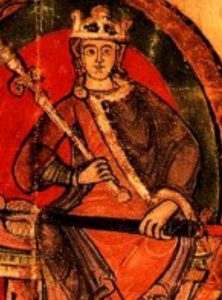
In 1177 the Lands of Kilrenny were gifted to the monks of the Dryburgh Abbey by Countess Ada de Warenne, the Scottish princess and mother of King Malcom lV and William the Lion, King of Scots.
Image: King Malcolm IV of Scotland
Tiends to the Church
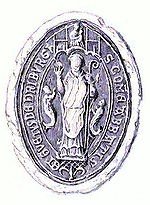
During the 1200s the Abbot of Dryburgh continued to assert his right to a portion of the revenue from the fish landed by the Kilrenny fishermen.
Image: Seal of Abbot of Dryburgh
Consecration of Kilrenny Church
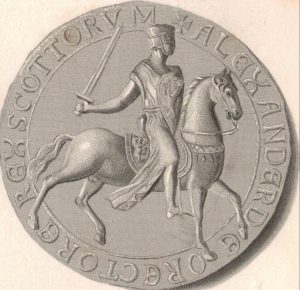
Kilrenny Church was dedicated to St Ethernan by David de Berham, Bishop of St Andrews, previously Chamberlain to King Alexander lll. The saint would also be attributed the names of St Adrian and St Irnie in later centuries.
Transfer from the Crown
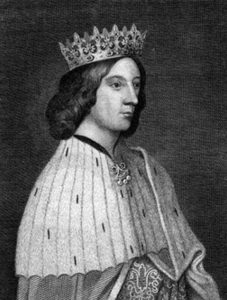
Kilrenny had returned to the Crown by the reign of James lll (1468-1488) and the lands were conferred upon the family of Béthune of Balfour, French nobility who had settled in Fife.
Image: King James III
Teinds for Church and Harbour
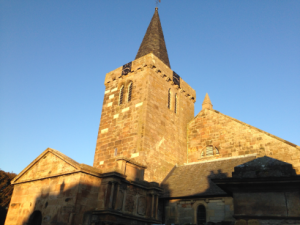
John Lauder, the Vicar of Kilrenny, drafted a charter to furnish Kilrenny with taxes from the fish caught by local fishermen. In return, the church agreed to fund repair and upkeep of the new harbour of Skynfasthaven for the fishermen.
Image: 13th Century Tower of Kilrenny Church
New Ownership
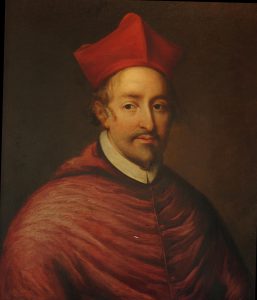
Kilrenny eventually passed to Cardinal David Beaton, Archbishop of St Andrews. In 1546 he was stabbed to death by some Protestant Lairds in St Andrews Castle. Later, his nephew, John Beaton ordered that the
harbour of Skinfasthaven be built.
Image: Cardinal David Beaton
Burgh of Regality
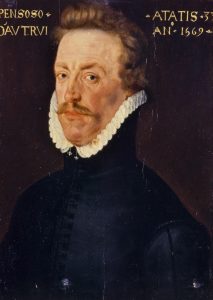
Patrick Adamson, Archbishop of St Andrews, granted a charter to John Beaton of Balfour, conferring upon him the new seaport of Skinfasthaven and erecting the town of Kilrenny to a Burgh of Regality. This meant the Burgh had the power to buy and sell goods, to erect a Mercat cross and hold a weekly Sabbath Fair.
Image: Patrick Adamson
Heirs and Successors

John Beaton’s son was confirmed as the hereditary tenant of the ‘port and heavyne callit the Skynfast Heyvn’. The charter was confirmed by
James Vl in 1579. Kilrenny now consisted of the rural village of Upper Kilrenny, and the fishing town of Nether (lower) Kilrenny, including the
port of Skinfasthaven.El Gran Grifón
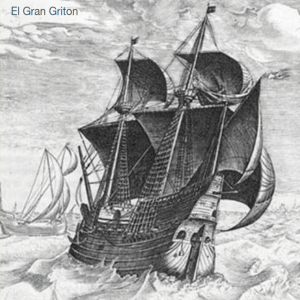
James Melville was appointed Minister of Kilrenny. He was instrumental in the rescue of and eventual release of the crew of El Gran Grifón, the Spanish Armada ship. The vessel came into Anstruther harbour months after their defeat by Queen Elizabeth’s fleet. It had 227 men on board.
Image: El Gran Grifón
Royal Burgh by Accident
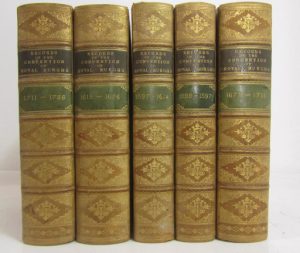
Kilrenny was accidentally enrolled by the Convention of Royal Burghs. This permitted representation by a commissioner at the Scottish Parliament in 1612. The ensuing Kilrenny Town Councils considered the Burgh to have the status similar to the other 36 Scottish Royal Burghs.
Image: Convention of Royal Burghs Records
Civil War
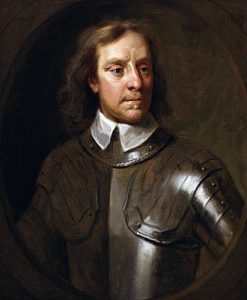
In the 1650s, units of Cromwell’s army occupied and ransacked Cellardyke
and Anstruther as the men of both towns had supported the Royalist cause
at the Battle of Kilsyth. Eventually, Kilrenny was one of the thirteen Fife
Burghs to have a representative in Cromwell’s Parliament.
Image: Oliver Cromwell
Royal Burgh Renounced
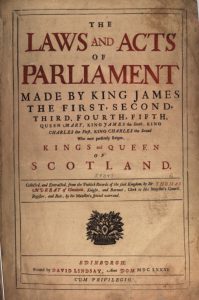
After many years of poverty, the Town Council asked to be removed from the Roll of the Royal Burghs along with the financial commitments attached. The Burgh was deleted from the Roll byAct of Parliament.
United Kingdom Parliament
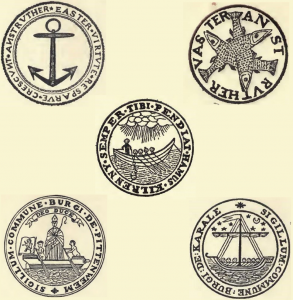
The Burgh was grouped with the four neighbouring Royal Burghs of the East
Neuk of Fife (Anstruther Easter, Anstruther Wester, Pittenweem and Crail) to send representation of Scotland in the new British Parliament.
Image: East Neuk Burgh crests
Burgh Disenfranchised
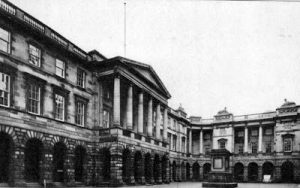
Irregularities in local politics and with politicians resulted in the Burgh being disenfranchised. Its affairs were taken over and run by managers appointed by the Court of Session, the Supreme Court of Scotland. This situation lasted for forty years.
Image: Court of Session, Edinburgh
Cholera Epidemic
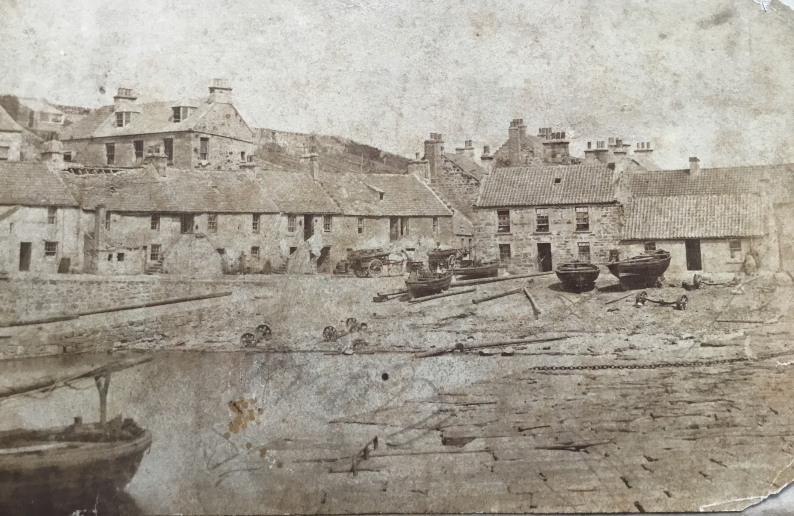
Cholera hit the town and dozens died in both epidemics bringing further
privation and destitution to the town.
Image: Shore Street
Gold Rush
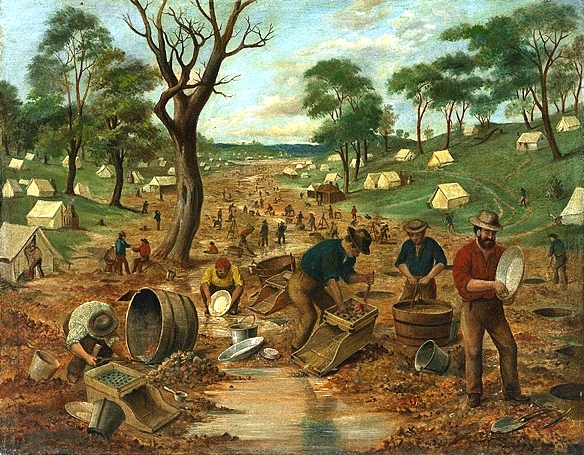
Having experienced poverty and disease many fishermen and their families chose to emigrate to Australia, Canada and other parts of the world. After gold was discovered in Australia in 1851 many fishermen sailed to the far
reaches of the Empire to seek their fortune.Herring Return
Herring had returned to the East coast of Scotland. With a great fleet of sea-going boats,fishermen famed for their skill and a magnificent harbour, Cellardyke was placed among the top fishing towns in the country. By 1881 the population had risen to 2730. However, as fishing boats increased in size, skippers moved their boats to the much larger Anstruther Harbour.
Image: Skinfasthaven 1865
Uniting the Burghs
The Royal Burghs of Anstruther Easter, Anstruther Wester and Kilrenny were
amalgamated to create the United Burghs of Kilrenny, Anstruther Easter and
Anstruther Wester.

